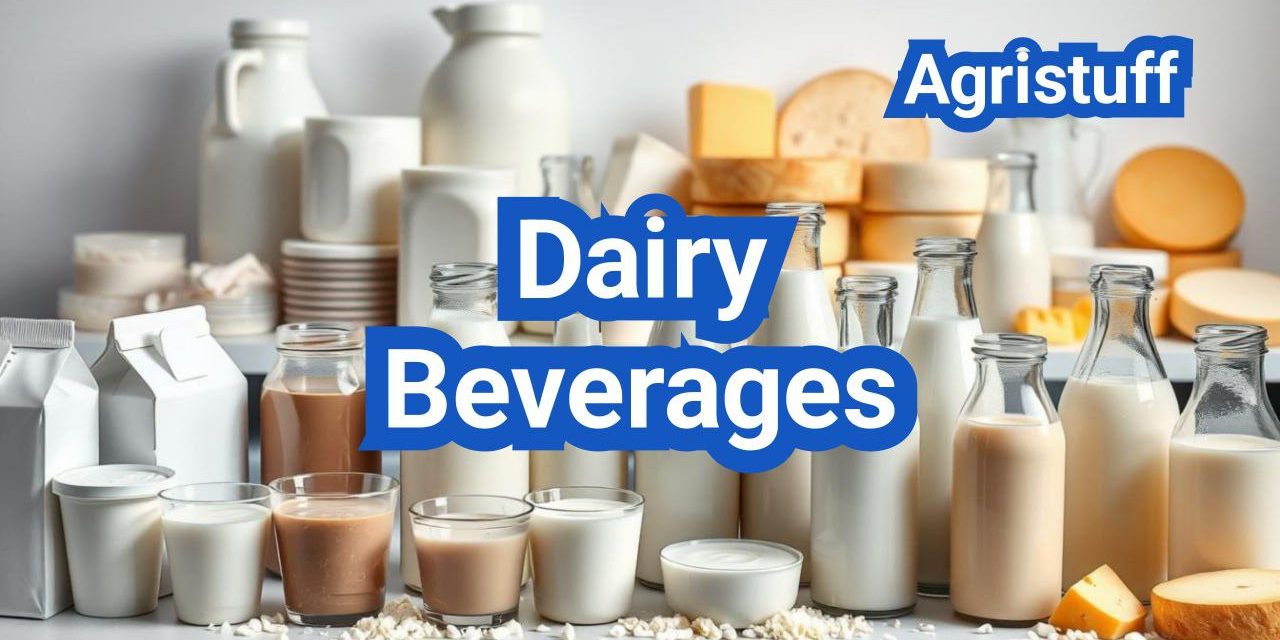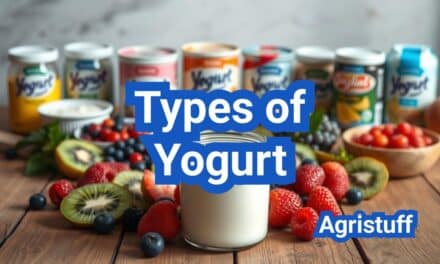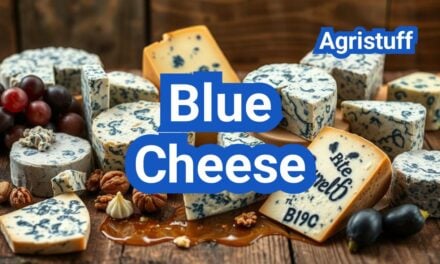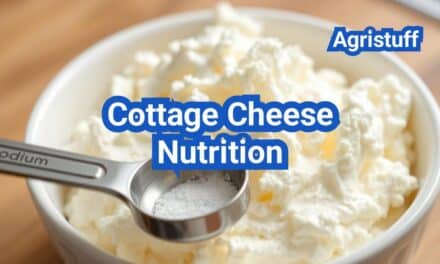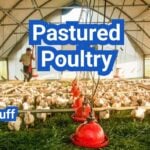The demand for high-protein, lactose-free dairy beverages is on the rise in the U.S. market, driven by consumer preferences for healthier and more sustainable options.
The global ultrafiltered milk market is projected to grow significantly, with ultra-filtering technology playing a crucial role in the production of these beverages.
As a result, manufacturers are focusing on innovative formulation and packaging solutions to meet consumer demands.
Key Takeaways
- The U.S. market is witnessing a surge in demand for lactose-free and high-protein dairy beverages.
- Ultra-filtering technology is driving growth in the dairy beverages market.
- Innovative formulation and packaging are key to meeting consumer demands.
- The trend is driven by consumer preferences for healthier and sustainable options.
- Manufacturers are adapting to these trends by innovating their products.
The Current State of Dairy Beverages in the U.S. Market
Consumer preferences are shaping the dairy beverages market in the U.S., with a focus on high-protein and low-sugar products. This shift is driving significant growth in the market.
Market Size and Growth Projections
The U.S. dairy beverages market has seen substantial growth in recent years, driven by increasing consumer demand for nutritious and convenient beverages. Market research indicates that this trend is expected to continue, with projections suggesting a steady growth rate over the next few years. Factors contributing to this growth include rising health awareness, premiumization, and the introduction of innovative products.
The market size is expected to expand as consumers continue to seek out dairy beverages that offer both nutritional benefits and great taste. Product innovation, including the development of lactose-free and high-protein variants, is playing a crucial role in this expansion.
Consumer Preferences and Demographic Trends
Consumer preferences in the U.S. dairy beverages market are diverse, with a growing inclination towards products that offer health benefits. Demographic trends show that younger consumers are driving the demand for dairy beverages with functional benefits, such as probiotics and enhanced protein content.
- Increased focus on health and wellness
- Preference for sustainable and eco-friendly packaging
- Growing demand for lactose-free and low-sugar products
These trends are influencing product development and marketing strategies across the industry.
Key Players and Competitive Landscape
The U.S. dairy beverages market is highly competitive, with several key players dominating the landscape. Major companies are focusing on product innovation, strategic partnerships, and expanding their distribution networks to gain a competitive edge.
| Company | Market Share | Key Products |
|---|---|---|
| Company A | 25% | High-protein milk, lactose-free yogurt drinks |
| Company B | 20% | Organic dairy beverages, probiotic drinks |
| Company C | 15% | Flavored milk, dairy-based beverages with added nutrients |
The competitive landscape is expected to evolve as new entrants emerge and existing players continue to innovate.
Types of Dairy Beverages: A Comprehensive Guide

The world of dairy beverages is vast and varied, encompassing traditional milk products and innovative new drinks. This diversity caters to the wide range of consumer preferences and dietary needs in the U.S. market.
Traditional Milk Products
Traditional milk products remain a staple in the dairy beverage market. These include:
- Whole milk
- Low-fat milk
- Skim milk
- Flavored milks (e.g., chocolate, strawberry)
These products are popular for their nutritional value, including high-quality protein, calcium, and vitamins.
Cultured Dairy Beverages
Cultured dairy beverages have gained popularity due to their probiotic benefits and unique flavors. Key products in this category include:
- Yogurt drinks
- Kefir
- Other fermented milk products
These beverages are not only delicious but also offer potential health benefits related to gut health and immune system support.
Protein-Enhanced Dairy Drinks
The rise in demand for high-protein products has led to the development of protein-enhanced dairy drinks. These beverages cater to consumers looking for:
- Post-workout recovery options
- Meal replacement beverages
- Snacks that provide a protein boost
Protein-enhanced dairy drinks often combine milk with additional protein sources such as whey or casein.
Specialty and Functional Dairy Beverages
Specialty and functional dairy beverages are designed to address specific consumer needs or preferences. Examples include:
- Lactose-free or low-lactose products
- Dairy beverages fortified with vitamins or minerals
- Products with added health benefits (e.g., heart health, digestive health)
These beverages demonstrate the innovation in the dairy industry, catering to diverse consumer demands.
The variety of dairy beverages available today reflects the industry’s response to consumer preferences for health, wellness, and convenience. As the market continues to evolve, we can expect to see even more innovative products.
How to Begin Formulating Dairy Beverages
Formulating dairy beverages requires a comprehensive approach, starting with defining product specifications and identifying the target consumer. This initial step is crucial in determining the direction of the product development process.
Defining Product Specifications and Target Consumer
To begin, manufacturers must clearly define their product specifications, including nutritional content, flavor profile, and packaging requirements. Understanding the target consumer is equally important, as it helps in tailoring the product to meet specific needs and preferences. Brands like fairlife have successfully innovated in the dairy space by offering high-protein, ultra-filtered milk products that appeal to health-conscious consumers.
Ingredient Selection and Quality Considerations
Once product specifications are defined, the next step involves selecting high-quality ingredients that meet these specifications. This includes choosing the right type of milk, flavorings, and nutritional supplements. The quality of ingredients directly impacts the final product’s taste, nutritional value, and overall consumer acceptance.
Balancing Nutrition, Flavor, and Texture
A key challenge in dairy beverage formulation is achieving a balance between nutrition, flavor, and texture. Manufacturers must ensure that their products are not only nutritious but also taste good and have an appealing texture. This often involves experimenting with different ingredient ratios and formulations during the development process.
Bench-Scale Development Process
The bench-scale development process is a critical phase where product formulations are tested and refined. This involves preparing small batches of the dairy beverage, evaluating their characteristics, and making necessary adjustments before scaling up production. It’s an iterative process that ensures the final product meets the desired specifications and consumer expectations.
By following these steps, dairy beverage manufacturers can develop products that are both innovative and appealing to consumers. The process requires careful planning, precise ingredient selection, and a thorough understanding of consumer preferences.
Step-by-Step Guide to Developing Lactose-Free Dairy Beverages
The production of lactose-free dairy beverages involves a complex interplay of enzymatic treatment, formulation, and sensory optimization. As consumers increasingly seek dairy products that are easier to digest, manufacturers must adapt by developing products that cater to these needs.
Enzymatic Lactose Hydrolysis Methods
Enzymatic lactose hydrolysis is a critical step in producing lactose-free dairy beverages. This process involves the use of lactase enzymes to break down lactose into glucose and galactose. The choice of lactase enzyme and the conditions under which it is used can significantly impact the efficiency and cost-effectiveness of the process.
Lactase Enzyme Selection: The selection of the appropriate lactase enzyme is crucial. Different enzymes have varying optimal temperatures and pH levels, which must be considered to ensure maximum activity.
| Enzyme Source | Optimal Temperature (°C) | Optimal pH |
|---|---|---|
| Kluyveromyces lactis | 35-40 | 6.5-7.0 |
| Aspergillus oryzae | 50-55 | 5.0-5.5 |
| Aspergillus niger | 55-60 | 4.0-4.5 |
Formulation Challenges and Solutions
Formulating lactose-free dairy beverages presents several challenges, including maintaining flavor, texture, and nutritional content. One of the primary challenges is ensuring that the enzymatic hydrolysis does not adversely affect the product’s sensory properties.
Sensory Challenges: The process of lactose hydrolysis can sometimes result in a sweeter product due to the production of glucose and galactose. Manufacturers must balance this sweetness with other flavor components.
Sensory Optimization Techniques
Sensory optimization is crucial for the success of lactose-free dairy beverages. Techniques such as flavor masking, texture modification, and the use of natural sweeteners can enhance the overall sensory experience.
- Flavor Masking: Using ingredients that mask any off-flavors resulting from the hydrolysis process.
- Texture Modification: Adjusting the formulation to maintain a desirable texture, potentially through the use of stabilizers or thickeners.
- Natural Sweeteners: Utilizing natural sweeteners to balance the sweetness level without adding refined sugars.
By carefully considering enzymatic lactose hydrolysis methods, addressing formulation challenges, and applying sensory optimization techniques, manufacturers can develop lactose-free dairy beverages that meet consumer expectations for taste, nutrition, and convenience.
Creating High-Protein Dairy Beverages
High-protein dairy beverages are becoming increasingly popular among consumers looking for products that support fitness and wellness goals. The development of these beverages involves several key considerations, from selecting the right protein sources to overcoming formulation challenges.
Protein Sources and Selection Criteria
The choice of protein source is critical in formulating high-protein dairy beverages. Common protein sources include milk protein concentrate, whey protein, and casein. Each of these proteins has unique properties that affect the final product’s nutritional content, texture, and flavor.
When selecting a protein source, manufacturers must consider factors such as protein content, solubility, and compatibility with other ingredients. For instance, whey protein is highly soluble and often used in beverages due to its ease of mixing and minimal impact on flavor.
Overcoming Stability and Solubility Challenges
One of the main challenges in formulating high-protein dairy beverages is ensuring the stability and solubility of the protein. Proteins can be prone to aggregation or precipitation, especially when exposed to heat, pH changes, or certain ingredients. To overcome these challenges, manufacturers can use protein stabilization techniques such as enzymatic hydrolysis or the addition of stabilizers like pectin or carrageenan.
Flavor Masking Techniques for Protein-Rich Products
High-protein dairy beverages can sometimes have undesirable flavors associated with the protein source, such as bitterness or a chalky texture. To address this, manufacturers can employ flavor masking techniques. These may include the use of natural flavor enhancers, sweeteners, or aroma compounds that counterbalance the off-flavors.
- Using natural flavor enhancers to improve taste
- Employing sweeteners to mask bitterness
- Incorporating aroma compounds to enhance overall flavor
Processing Considerations for High-Protein Formulations
The processing of high-protein dairy beverages requires careful consideration to maintain protein stability and ensure the final product meets quality standards. Key processing factors include heat treatment, homogenization, and filtration. Manufacturers must optimize these processes to prevent protein denaturation and maintain the desired texture and flavor.
For example, ultra-high temperature (UHT) processing can be used to extend shelf life, but it requires careful control to avoid damaging the protein structure. Similarly, homogenization can help achieve a uniform texture by reducing fat globule size and improving protein dispersion.
Formulating Cultured Dairy Beverages
Formulating cultured dairy beverages requires a deep understanding of both the starter cultures and the fermentation process. Cultured dairy beverages, such as yogurt drinks and kefir, have gained popularity due to their potential health benefits and unique flavor profiles.
Starter Culture Selection and Management
The selection of appropriate starter cultures is crucial for the quality and consistency of cultured dairy beverages. Different cultures can impart distinct flavors and textures, ranging from the tanginess of yogurt to the effervescence of kefir. Starter culture management involves maintaining the viability and activity of these cultures through proper storage, handling, and propagation techniques.
When choosing a starter culture, manufacturers must consider factors such as the desired product characteristics, consumer preferences, and production constraints. For instance, some cultures may require specific temperature conditions or have varying levels of phage sensitivity.
| Culture Type | Characteristics | Application |
|---|---|---|
| Mesophilic | Produces lactic acid, mild flavor | Buttermilk, sour cream |
| Thermophilic | Produces lactic acid, higher temperature tolerance | Yogurt, some cheese products |
| Probiotic | Health-promoting properties | Kefir, probiotic drinks |
Fermentation Parameters and Process Control
Fermentation is a critical step in the production of cultured dairy beverages, where the starter culture converts milk sugars into lactic acid, producing the desired texture and flavor. Key fermentation parameters include temperature, time, and agitation, which must be carefully controlled to achieve consistent product quality.
Temperature control is particularly important, as it affects the rate of fermentation and the final product characteristics. For example, yogurt fermentation typically occurs between 40°C to 45°C, while kefir may ferment at slightly lower temperatures.
Post-Fermentation Processing Considerations
After fermentation, cultured dairy beverages undergo various processing steps, including cooling, packaging, and sometimes additional treatments like pasteurization or the addition of flavorings. These steps must be carefully managed to preserve the product’s quality and safety.
Cooling is essential to stop the fermentation process and prevent over-acidification. Packaging must be designed to protect the product from contamination and maintain its physical integrity during distribution.
Extending Shelf Life of Cultured Products
Extending the shelf life of cultured dairy beverages is a significant challenge due to their perishable nature and the potential for post-fermentation contamination. Strategies for shelf life extension include aseptic packaging, cold chain management, and the use of preservatives or natural antimicrobials.
Implementing a robust quality control system, including regular testing for microbial contamination and monitoring of product pH, can also help in maintaining product quality throughout its shelf life.
Ultra-Filtering Technology: Implementation Guide

Ultra-filtering technology has revolutionized the dairy industry by enabling the production of high-protein, low-lactose beverages. This technology is pivotal for manufacturers looking to enhance the nutritional profile and quality of their dairy products.
Principles of Membrane Filtration
Membrane filtration is the core of ultra-filtering technology, utilizing semi-permeable membranes to separate components based on size and molecular weight. This process allows for the selective removal of unwanted substances, resulting in a refined product with improved characteristics.
The efficiency of membrane filtration depends on several factors, including membrane pore size, operating pressure, and temperature. Optimizing these parameters is crucial for achieving the desired separation and maintaining membrane integrity.
Equipment Selection and Configuration
Selecting the appropriate ultra-filtration equipment is vital for effective implementation. Key considerations include the type of membrane material, module configuration, and system capacity. Manufacturers must choose equipment that aligns with their production needs and product specifications.
Configuration of the ultra-filtration system also plays a significant role in its performance. Factors such as flow rate, pressure control, and cleaning protocols must be carefully managed to ensure optimal operation and longevity of the equipment.
Process Parameters and Optimization
Optimizing process parameters is essential for maximizing the efficiency of ultra-filtering technology. This involves adjusting variables such as temperature, pressure, and flow rate to achieve the desired product quality and yield.
Regular monitoring and adjustment of these parameters are necessary to maintain consistency and address any deviations that may occur during production.
Troubleshooting Common Ultra-Filtration Issues
Despite its benefits, ultra-filtering technology can encounter issues such as membrane fouling, flux decline, and product contamination. Identifying the root cause of these problems is crucial for implementing effective solutions.
Strategies for troubleshooting include regular maintenance, cleaning protocols, and operator training. By addressing these issues proactively, manufacturers can minimize downtime and ensure the continued effectiveness of their ultra-filtration systems.
Implementing Microfiltration and Other Filtration Technologies

In the pursuit of higher quality dairy beverages, manufacturers are turning to microfiltration and other sophisticated filtration technologies. These advanced methods are crucial for improving product clarity, removing contaminants, and extending shelf life.
Microfiltration vs. Ultra-Filtration: Selection Guide
When deciding between microfiltration and ultra-filtration, manufacturers must consider their specific production needs. Microfiltration is typically used for removing bacteria and other microorganisms, while ultra-filtration is often employed for concentrating proteins and other valuable components.
The choice between these technologies depends on factors such as:
- The desired level of clarification
- The type of contaminants to be removed
- The need for protein concentration
- Equipment availability and cost considerations
Applications in Dairy Beverage Production
Microfiltration and other filtration technologies have various applications in dairy beverage production, including:
- Clarification of milk and whey
- Removal of bacteria and spores
- Concentration of proteins and other valuable components
- Production of lactose-reduced or lactose-free products
These technologies enable manufacturers to produce high-quality dairy beverages with improved taste, texture, and nutritional profiles.
Impact on Product Quality and Shelf Life
The implementation of microfiltration and other filtration technologies significantly impacts product quality and shelf life. By removing contaminants and improving clarity, these methods contribute to:
- Enhanced consumer acceptance
- Extended shelf life
- Improved nutritional stability
- Better overall product quality
Scale-Up Considerations for Filtration Systems
When scaling up filtration systems, manufacturers must consider several factors, including:
| Factor | Description |
|---|---|
| Equipment design | Ensuring that larger equipment maintains the same filtration efficiency as smaller-scale models |
| Process control | Implementing robust control systems to maintain consistent filtration parameters |
| Validation | Conducting thorough validation tests to ensure the scaled-up system meets performance requirements |
By carefully considering these factors, manufacturers can successfully scale up their filtration systems to meet growing production demands.
Thermal Processing Options for Dairy Beverages

Effective thermal processing is key to maintaining the nutritional and sensory properties of dairy beverages. Thermal processing is a critical step in ensuring the safety and quality of these products.
Ultra-Pasteurization Implementation
Ultra-pasteurization is a widely used thermal processing method that involves heating dairy beverages to a high temperature (usually around 138°C) for a short period (typically 2 seconds), followed by rapid cooling. This process effectively eliminates pathogenic bacteria, extending the product’s shelf life.
The implementation of ultra-pasteurization requires careful consideration of equipment selection and process control to ensure that the desired level of sterilization is achieved without compromising the product’s quality.
UHT Processing Methods and Equipment
Ultra-High Temperature (UHT) processing is another thermal processing option that involves heating dairy beverages to an even higher temperature (usually around 145°C) for a very short time (typically 2-5 seconds). UHT processing allows for aseptic packaging, further extending the product’s shelf life.
UHT processing equipment includes direct and indirect heating systems. Direct heating involves injecting steam into the product, while indirect heating uses a heat exchanger to transfer heat to the product.
Extended Shelf Life (ESL) Technologies
Extended Shelf Life (ESL) technologies aim to provide a balance between the safety and quality of dairy beverages. ESL processing typically involves a combination of thermal processing and other preservation methods, such as microfiltration or the addition of natural preservatives.
ESL technologies offer dairy manufacturers the flexibility to produce products with a longer shelf life without the need for UHT processing, thus preserving the product’s nutritional and sensory properties.
Effects on Nutritional and Sensory Properties
Thermal processing can have both positive and negative effects on the nutritional and sensory properties of dairy beverages. While it ensures safety by eliminating pathogens, high temperatures can degrade certain nutrients and affect the product’s flavor and texture.
| Thermal Processing Method | Nutritional Impact | Sensory Impact |
|---|---|---|
| Ultra-Pasteurization | Minimal loss of vitamins | Potential for slight flavor change |
| UHT Processing | Some loss of heat-sensitive vitamins | Noticeable flavor and texture changes |
| ESL Technologies | Preserves nutrients better than UHT | Minimal impact on flavor and texture |
In conclusion, the choice of thermal processing method depends on the desired balance between safety, shelf life, and product quality. By understanding the effects of different thermal processing options, dairy manufacturers can make informed decisions to meet consumer demands.
How to Select and Apply Stabilizer Systems

Stabilizer systems play a vital role in the production of high-quality dairy beverages, affecting both texture and stability. The right stabilizer system can enhance the overall quality and shelf-life of dairy products. In this section, we will explore the key aspects of selecting and applying stabilizer systems in dairy beverages.
Hydrocolloids: Pectin and Carrageenan Applications
Hydrocolloids, such as pectin and carrageenan, are commonly used in dairy beverages to improve texture and stability. Pectin is particularly effective in stabilizing acidified dairy drinks, while carrageenan is known for its ability to prevent whey separation and improve mouthfeel.
The choice between pectin and carrageenan depends on the specific application and desired product characteristics. For instance, pectin is often used in yogurt drinks to create a smooth texture, whereas carrageenan is used in milk-based beverages to enhance stability.
Protein Stabilization Strategies
Protein stabilization is critical in dairy beverages, especially those with high protein content. Strategies include the use of protein-stabilizing ingredients and careful control of processing conditions.
One effective approach is to use micellar casein, which can help stabilize protein-based dairy beverages. Additionally, adjusting the pH and ionic strength during processing can improve protein stability.
Clean Label Stabilization Approaches
Consumers are increasingly demanding clean label products, driving the need for natural stabilization approaches. Clean label stabilization involves using natural ingredients and minimizing the use of additives.
Examples of clean label stabilizers include pectin derived from fruit and gums from natural sources. These ingredients can provide effective stabilization without compromising on label integrity.
Testing Stability in Dairy Beverage Formulations
Stability testing is essential to ensure that dairy beverages remain stable throughout their shelf-life. This involves assessing the product’s physical, chemical, and microbiological stability.
| Stability Test | Description | Frequency |
|---|---|---|
| Physical Stability | Assessing sedimentation, creaming, or separation | Weekly |
| Chemical Stability | Monitoring pH, nutrient degradation | Bi-weekly |
| Microbiological Stability | Checking for microbial growth | Monthly |
By understanding and applying these stabilizer systems, dairy beverage manufacturers can produce high-quality products that meet consumer expectations.
Selecting Packaging Solutions for Dairy Beverages

Selecting the right packaging solution is essential for dairy beverage manufacturers to ensure product integrity and market success. The packaging of dairy beverages plays a critical role in maintaining product quality, ensuring safety, and enhancing consumer appeal.
Material Comparison: PET vs. HDPE vs. Carton
The choice of packaging material is a crucial decision in dairy beverage production. Common materials include PET (Polyethylene Terephthalate), HDPE (High-Density Polyethylene), and carton packaging. Each material has its advantages and disadvantages.
- PET: Known for its clarity, lightweight, and recyclability. It’s commonly used for bottled water and some dairy products.
- HDPE: Offers high density and chemical resistance, making it suitable for dairy products that require a more robust packaging solution.
- Carton Packaging: Provides excellent light protection and is often used for aseptic packaging of dairy beverages, offering a long shelf life without refrigeration.
Light Protection Strategies and Implementation
Light exposure can significantly affect the quality and shelf life of dairy beverages. Effective light protection strategies are essential to prevent spoilage and maintain nutritional value.
- Using packaging materials that block light, such as carton or opaque PET.
- Implementing UV protection technologies in packaging.
- Optimizing packaging design to minimize light exposure during storage and transportation.
Aseptic Packaging Systems Selection Guide
Aseptic packaging is a critical technology for extending the shelf life of dairy beverages without refrigeration. The selection of an appropriate aseptic packaging system depends on several factors, including product type, packaging material, and production volume.
Key considerations include the sterility of the packaging environment, the compatibility of the packaging material with the product, and the efficiency of the packaging process.
Sustainable Packaging Considerations and Options
Sustainability is becoming increasingly important in packaging decisions for dairy beverages. Manufacturers are looking for options that reduce environmental impact while maintaining product quality.
- Using recyclable materials and minimizing packaging waste.
- Exploring biodegradable packaging options.
- Optimizing packaging design to reduce material usage.
Ensuring Regulatory Compliance for U.S. Dairy Beverages

Dairy beverage producers must navigate a complex regulatory landscape to ensure compliance with U.S. laws. The regulatory environment for dairy beverages in the U.S. is multifaceted, involving various federal and state regulations.
Navigating FDA Requirements and Standards of Identity
The FDA sets standards of identity for dairy products, including dairy beverages. These standards define the composition and labeling requirements for products like milk, yogurt, and kefir. To comply, manufacturers must understand the specific requirements for their products, such as the minimum milkfat content for yogurt or the allowable additives for flavored milk.
FDA regulations also cover aspects like sanitation, packaging, and labeling. For instance, dairy beverage manufacturers must adhere to good manufacturing practices (GMPs) to ensure product safety and quality.
Implementing FSMA Preventive Controls for Dairy
The Food Safety Modernization Act (FSMA) requires dairy beverage manufacturers to implement preventive controls to minimize the risk of contamination. This involves conducting a hazard analysis to identify potential risks and implementing controls to mitigate these risks.
Preventive controls may include measures like supplier verification programs, sanitation controls, and allergen controls. Manufacturers must also establish a recall plan in case of a safety issue.
Labeling Requirements and Permissible Claims
Labeling is a critical aspect of regulatory compliance for dairy beverages. Manufacturers must ensure that their labels comply with FDA regulations regarding nutrient content claims, health claims, and other labeling requirements.
For example, if a dairy beverage is labeled as “high in protein,” it must meet the FDA’s definition of “high protein.” Manufacturers should also be cautious when making health claims, ensuring that they are supported by scientific evidence and comply with FDA regulations.
Recordkeeping and Documentation Systems
Maintaining accurate records is essential for regulatory compliance. Dairy beverage manufacturers must keep records of their production processes, including ingredient sourcing, processing, packaging, and distribution.
Effective recordkeeping systems enable manufacturers to track their products throughout the supply chain, facilitating recalls if necessary and demonstrating compliance with regulatory requirements.
By understanding and implementing these regulatory requirements, dairy beverage manufacturers can ensure compliance with U.S. laws and maintain the trust of their consumers.
Implementing 3-A Sanitary Design in Dairy Processing
3-A sanitary design plays a vital role in dairy processing by providing guidelines for equipment and facility design that facilitate easy cleaning and sanitization. This approach is crucial for maintaining high standards of cleanliness and safety in dairy processing facilities.
Equipment Selection and Validation
The selection of equipment that meets 3-A sanitary standards is a critical step in dairy processing. Equipment should be designed to prevent bacterial growth and contamination. Key considerations include smooth surfaces, ease of disassembly for cleaning, and the avoidance of crevices where bacteria can accumulate. Validation of equipment involves verifying that it meets the required sanitary standards through regular inspections and testing.
Facility Layout and Construction Guidelines
The layout and construction of dairy processing facilities must also adhere to 3-A sanitary design principles. Facilities should be designed to minimize the risk of contamination by ensuring a logical flow of product through the processing area, separating raw and processed product areas, and providing adequate space for cleaning and maintenance activities.
Construction materials should be durable, non-toxic, and easy to clean. Walls, floors, and ceilings should be designed to prevent the accumulation of dirt and moisture, which can harbor bacteria and other pathogens.
Developing Effective Cleaning and Sanitization Protocols
Effective cleaning and sanitization are essential components of 3-A sanitary design. Protocols should be developed based on the specific needs of the dairy processing operation, taking into account the types of equipment and products being processed. Regular cleaning schedules should be implemented, and personnel should be trained in proper cleaning and sanitization techniques.
Verification and Monitoring Programs
To ensure the ongoing effectiveness of 3-A sanitary design implementation, verification and monitoring programs are necessary. These programs involve regular inspections, microbiological testing, and review of cleaning and sanitization protocols to identify areas for improvement. By continuously monitoring and verifying sanitary conditions, dairy processors can maintain high levels of product safety and quality.
Quality Assurance and Shelf-Life Management Systems
Maintaining high-quality dairy beverages requires a comprehensive approach to quality assurance and shelf-life management. This involves several critical steps that ensure the final product is safe, nutritious, and appealing to consumers.
Establishing Critical Control Points
Critical control points (CCPs) are essential in the production process where control can be exercised to prevent, eliminate, or reduce food safety hazards. In dairy beverage production, CCPs might include pasteurization, packaging, and storage. Identifying and monitoring these points helps in maintaining product quality and safety.
The process of establishing CCPs involves:
- Identifying potential hazards in the production process
- Determining the critical limits for each CCP
- Implementing monitoring procedures
- Establishing corrective actions for deviations
Shelf-Life Testing Methodologies and Protocols
Shelf-life testing is crucial for determining how long a dairy beverage remains safe and maintains its quality under various storage conditions. This involves:
- Conducting real-time storage tests
- Using accelerated storage tests to predict shelf life
- Monitoring parameters such as pH, microbial growth, and sensory attributes
| Shelf-Life Testing Method | Description | Advantages |
|---|---|---|
| Real-Time Storage Test | Products stored under normal conditions and tested over time | Provides accurate shelf-life data |
| Accelerated Storage Test | Products stored under stress conditions (e.g., higher temperature) | Quickly predicts shelf life |
Sensory and Flavor Stability Monitoring
Sensory evaluation plays a vital role in assessing the quality and acceptability of dairy beverages. Regular monitoring of sensory attributes such as taste, aroma, and texture helps in identifying any deviations from the desired product profile.
Flavor stability is also crucial, as dairy beverages can be prone to flavor changes due to lipid oxidation or other chemical reactions. Techniques such as gas chromatography can be used to monitor volatile compounds and predict flavor stability.
Troubleshooting Quality Issues in Production
Despite best efforts, quality issues can arise during production. Effective troubleshooting involves:
- Identifying the root cause of the problem
- Implementing corrective actions
- Verifying the effectiveness of these actions
Common quality issues in dairy beverage production include contamination, off-flavors, and texture problems. By having a robust quality assurance system in place, manufacturers can quickly address these issues and maintain product quality.
Distribution Strategies for Dairy Beverages
The dairy beverage industry relies heavily on effective distribution strategies to maintain product quality and reach consumers. As the demand for dairy beverages continues to grow, manufacturers must navigate complex distribution networks to ensure their products remain fresh and safe for consumption.
Cold Chain Management Best Practices
Cold chain management is critical for dairy beverages, which are perishable products requiring consistent refrigeration. Best practices include maintaining a consistent refrigerated temperature below 40°F (4°C) throughout the distribution process.
Implementing cold chain management involves:
- Using refrigerated transportation and storage facilities
- Monitoring temperature and humidity levels
- Training personnel on handling perishable products
- Conducting regular maintenance on refrigeration equipment
Ambient Distribution Options and Requirements
While cold chain management is essential for many dairy beverages, some products can be distributed at ambient temperatures. Ambient distribution requires careful product formulation and packaging to ensure stability and safety.
| Distribution Method | Product Requirements | Packaging Needs |
|---|---|---|
| Ambient | Stable formulation, UHT processing | Aseptic packaging, protective barrier |
| Cold Chain | Refrigerated storage, sensitive to temperature | Insulated packaging, refrigerated transport |
Export Considerations for U.S. Dairy Beverages
Exporting dairy beverages from the U.S. involves complying with international regulations and standards. Manufacturers must research and understand the requirements for each target market.
Key considerations include:
- Regulatory compliance: Ensure products meet the importing country’s food safety and labeling regulations.
- Product formulation: Adjust formulations as necessary to comply with local ingredient restrictions or preferences.
- Labeling and packaging: Comply with local labeling requirements and consider packaging that meets international shipping standards.
Logistics Optimization for Perishable Products
Optimizing logistics for dairy beverages involves streamlining the supply chain to minimize transit times and maintain product quality. Strategies include using advanced logistics software to track shipments and predict potential delays.
Effective logistics optimization can help reduce costs, improve delivery times, and enhance overall customer satisfaction.
Future of Dairy Beverages in the U.S. Market
The dairy beverage market in the United States is poised for continued growth, driven by consumer demand for innovative and healthy products. As discussed in the preceding sections, formulation, ultra-filtering, and packaging play crucial roles in meeting these demands.
Trends such as lactose-free, high-protein, and cultured dairy beverages are expected to shape the industry’s future. Dairy beverage innovations, including new flavors and functional benefits, will be key to capturing market share. The U.S. market trends indicate a shift towards sustainable packaging and clean label products.
As the market continues to evolve, manufacturers must stay abreast of consumer preferences and regulatory requirements. By leveraging the insights and strategies outlined in this article, dairy beverage producers can position themselves for success in a competitive and dynamic market. The future of dairy beverages looks promising, with opportunities for growth and innovation in the U.S. market.
FAQ
What are the main types of dairy beverages available in the U.S. market?
The main types of dairy beverages available in the U.S. market include traditional milk products, cultured dairy beverages like yogurt drinks and kefir, protein-enhanced dairy drinks, and specialty or functional dairy beverages.
How is lactose-free dairy beverage formulated?
Lactose-free dairy beverages are formulated using enzymatic lactose hydrolysis methods, which break down lactose into easily digestible sugars. This process involves adding lactase enzyme to the dairy product.
What are the benefits of ultra-filtering in dairy beverage production?
Ultra-filtering in dairy beverage production offers several benefits, including improved protein content, reduced lactose levels, and enhanced overall quality and shelf life of the product.
How do you select the right packaging for dairy beverages?
Selecting the right packaging for dairy beverages involves considering factors such as material (PET, HDPE, carton), light protection strategies, aseptic packaging systems, and sustainable packaging options to ensure product safety and quality.
What are the key considerations for ensuring regulatory compliance in U.S. dairy beverages?
Key considerations for ensuring regulatory compliance in U.S. dairy beverages include navigating FDA requirements, implementing FSMA preventive controls, adhering to labeling requirements, and maintaining accurate recordkeeping and documentation systems.
How can dairy beverage manufacturers ensure quality assurance and shelf-life management?
Dairy beverage manufacturers can ensure quality assurance and shelf-life management by establishing critical control points, conducting shelf-life testing, monitoring sensory and flavor stability, and implementing effective troubleshooting protocols.
What are the distribution strategies for dairy beverages?
Distribution strategies for dairy beverages include cold chain management best practices, ambient distribution options, export considerations, and logistics optimization techniques to ensure timely and efficient delivery of products.
What are the trends shaping the future of dairy beverages in the U.S. market?
Trends shaping the future of dairy beverages in the U.S. market include growing demand for lactose-free and high-protein products, increasing popularity of cultured dairy beverages, and rising interest in sustainable and eco-friendly packaging solutions.
How do you formulate high-protein dairy beverages?
Formulating high-protein dairy beverages involves selecting suitable protein sources, overcoming stability and solubility challenges, applying flavor masking techniques, and considering processing requirements to create a high-quality product.
What are the benefits of microfiltration in dairy beverage production?
Microfiltration in dairy beverage production offers benefits such as improved product quality, extended shelf life, and reduced bacterial counts, making it a valuable processing step for manufacturers.
How do you develop cultured dairy beverages like yogurt drinks and kefir?
Developing cultured dairy beverages involves selecting appropriate starter cultures, controlling fermentation parameters, managing post-fermentation processing, and implementing strategies to extend shelf life while maintaining product quality.
Conclusion of: Dairy Beverages: Formulation
Dairy Beverages: Formulation, Ultra-Filtering, and Packaging for the U.S. Market
Dairy beverages remain a cornerstone of U.S. grocery and foodservice, and winning in this category means balancing taste, nutrition, safety, and shelf life while complying with federal rules. For any processor or brand owner working on dairy beverages, the Grade “A” Pasteurized Milk Ordinance (PMO) and related federal guidance provide the framework for pasteurization, testing, and interstate shipment—your baseline for safe scale-up and national distribution. FDA PMO overview
Why dairy beverages matter now in the U.S. market
Consumer behavior has shifted toward value-added dairy beverages—think lactose-free, high-protein, cultured drinks, and flavored milks—because they solve for tolerance, satiety, and convenience. While conventional fluid milk volumes have faced headwinds, brands that layer functionality and flavor into dairy beverages can capture margin and loyalty, especially with strong cold-chain and e-commerce strategies. USDA ERS: Dairy market insights
Standards of identity: naming and composition rules
Before formulating or naming dairy beverages, confirm whether your product falls under a standard of identity (e.g., “milk” or “reduced fat milk”) and meets compositional requirements such as milkfat and solids-not-fat. Missteps here can cause misbranding risks for dairy beverages, affecting retail acceptance and recall exposure. 21 CFR 131.110 (Milk)
Nutrition labeling and “Added Sugars” on dairy beverages
Nutrition Facts labeling governs claims and consumer transparency for dairy beverages, with “Added Sugars” disclosure central to flavored and sweetened SKUs. Format, font sizes, and rounding rules must follow federal regulation, which also ties into retailer compliance programs and audit checklists for dairy beverages. 21 CFR 101.9 (Nutrition Facts)
Formulation targets: solids, fat, protein, and mouthfeel
Great dairy beverages harmonize fat and protein ratios with total solids to deliver body, creaminess, and stability—then layer in flavor, minerals, and sweeteners without upsetting physical stability. Scan applicable dairy standards across Part 131 when using standardized terms; this prevents mislabeled dairy beverages and supports consistent quality specs. 21 CFR Part 131 (Milk & Cream)
Ultra-filtering (UF) as a formulation lever
Ultra-filtering uses selective membranes to retain proteins and fat while allowing water, lactose, and some minerals to pass. By concentrating protein and trimming lactose, UF enables high-protein, lower-lactose dairy beverages without overcooking the flavor—ideal for clean labels and stable texture in RTD formats. University of Guelph: Membrane processing
Lactase enzymes are GRAS for lactose-free dairy beverages
Lactase (β-galactosidase) hydrolyzes lactose into glucose and galactose, delivering tolerance and sweetness shifts without extra added sugar. FDA GRAS notices cover lactase preparations used in milk and whey, giving processors a clear path to lactose-free dairy beverages that maintain familiar flavor and nutrition. FDA GRN for lactase (β-galactosidase)
UF + lactase: designing texture and tolerance in dairy beverages
Combining UF with lactase lets developers reduce lactose while preserving casein micelles and whey proteins that drive creaminess, then fine-tune viscosity with homogenization and stabilizers. This approach often yields dairy beverages with stronger protein claims and smoother mouthfeel across shelf life. PubMed: UF milk beverage base study
Sweetness strategy that fits U.S. guidance
Flavor wins, but U.S. labeling scrutiny on “Added Sugars” means your sweetening system should hit taste targets while keeping labels compliant. Mapping sucrose or syrups versus lactose hydrolysis is essential for flavored dairy beverages and for meeting retailer category guardrails. FDA: Added Sugars guidance
Stabilizers that actually work in dairy beverages
Protein-rich matrices can sediment or serum-separate; carrageenan helps suspend cocoa and minerals, and can reduce creaming under heat/cold cycles. Always align usage with approved functions and levels so dairy beverages remain stable without compromising clean-label goals. 21 CFR 172.620 (Carrageenan)
Pectin for fruit and cultured dairy beverages
Pectins (high-ester and low-ester) are affirmed as GRAS and widely used to stabilize proteins in fruit smoothies and cultured dairy beverages like drinkable yogurt and kefir. Selecting the right DE and usage level helps protect texture through distribution. 21 CFR 184.1588 (Pectins)
Thermal maps: HTST, UP, and ESL for dairy beverages
Heat treatment dictates flavor and shelf life: HTST supports fresh, refrigerated dairy beverages; ultra-pasteurization extends chilled life; and ESL integrates higher heat with hygienic filling. Define thermal profile first, then optimize formula and packaging around it for dairy beverages that travel well. FDA PMO: pasteurization framework
Aseptic/UHT when ambient shelf life is required
Aseptic UHT processing sterilizes product and package to achieve months of ambient life, enabling nationwide distribution and e-commerce for dairy beverages without constant refrigeration. Sensory optimization (Maillard control, flavor modulation) becomes the key differentiator in these systems. Tetra Pak: UHT milk basics
Microfiltration (MF) supports ESL dairy beverages
MF lowers bacterial load so pasteurization can deliver longer refrigerated life with fresher flavor—ideal for premium dairy beverages. Strict hygiene is crucial; spoilage organisms can persist if sanitation falters, so validate filters, seals, and CIP procedures. Cornell Chronicle: microfiltered milk hygiene
What a 60–90 day ESL program looks like
ESL lines for dairy beverages often combine MF or bactofugation, elevated heat, HEPA enclosures, positive-pressure fillers, and validated CIP/SIP. Real operations report ~90 days refrigerated shelf life when hygiene and barriers are dialed in—expanding route-to-market options. Packaging World: Byrne Dairy ESL case
Hygienic equipment design matters
Specifying equipment built to 3-A Sanitary Standards simplifies cleaning and inspection, reducing biofilm risk in dairy beverages processing. Hygienic design also streamlines regulatory and customer audits and helps protect flavor consistency over shelf life. 3-A SSI: About 3-A
FSMA preventive controls for dairy beverages plants
Under FSMA, facilities producing dairy beverages need a written food-safety plan with a hazard analysis and risk-based preventive controls (process, allergen, sanitation, supply-chain). Validate thermal steps, membrane integrity, and cleaning, and maintain thorough records. 21 CFR 117.135 (Preventive controls)
Packaging: oxygen and light protection for flavor
Oxidation and light-struck flavors can dull fresh notes in dairy beverages. Research highlights the role of light protection and oxygen control across HDPE, PET, and carton formats; choosing the right barrier preserves flavor and nutrients from plant to shelf. Journal of Dairy Science: packaging & flavor stability
Cartons, bottles, and closures for dairy beverages
Aseptic cartons offer strong oxygen and light barriers for ambient dairy beverages, while light-protected PET/HDPE bottles fit chilled channels. Align closures, induction seals, and headspace with your process to reduce oxygen pick-up and protect quality in dairy beverages. Tetra Pak: Packaging material structure
Claims and commercialization checklist for dairy beverages
As you launch dairy beverages, harmonize claims (“high protein,” “no added sugar”) with FDA rules and ensure Nutrition Facts formatting is audit-ready. Keep supplier specs, validations, and shelf-life studies on file for retailers and certification bodies. FDA: Industry resources on label changes
Route-to-market and category strategy
Successful U.S. go-to-market plans for dairy beverages pair distribution type (refrigerated vs. ambient) with claims, pack sizes, and price architecture. To navigate seasonality and demand, pair scanner data with federal datasets to benchmark dairy beverages against category baselines. USDA ERS: Dairy Data
Final thought
Winning with dairy beverages in the U.S. means engineering texture and flavor through UF, lactase, and smart stabilizers; matching thermal regimes (HTST, UP, ESL, or aseptic) to routes-to-market; and protecting freshness with barrier packaging and hygienic design. Build every step—from formulation to labeling—on authoritative standards, and validate shelf life so your dairy beverages consistently delight from plant to pantry. USDA ERS: Dairy overview
Sources & References
- FDA — NCIMS/PMO hub
- USDA ERS — Dairy (topic page)
- eCFR — 21 CFR 131.110 (Milk)
- eCFR — 21 CFR 101.9 (Nutrition labeling)
- University of Guelph — Membrane Processing
- PubMed — UF milk beverage base (2024)
- FDA — Added Sugars on Nutrition Facts
- eCFR — 21 CFR 172.620 (Carrageenan)
- eCFR — 21 CFR 184.1588 (Pectins)
- Tetra Pak — UHT milk
- Cornell Chronicle — Microfiltered milk hygiene
- Packaging World — Byrne Dairy ESL
- 3-A Sanitary Standards, Inc. — About 3-A
- Legal Information Institute — 21 CFR 117.135
- Journal of Dairy Science — Packaging & flavor
- Tetra Pak — Packaging material structure
- USDA ERS — Dairy Data

